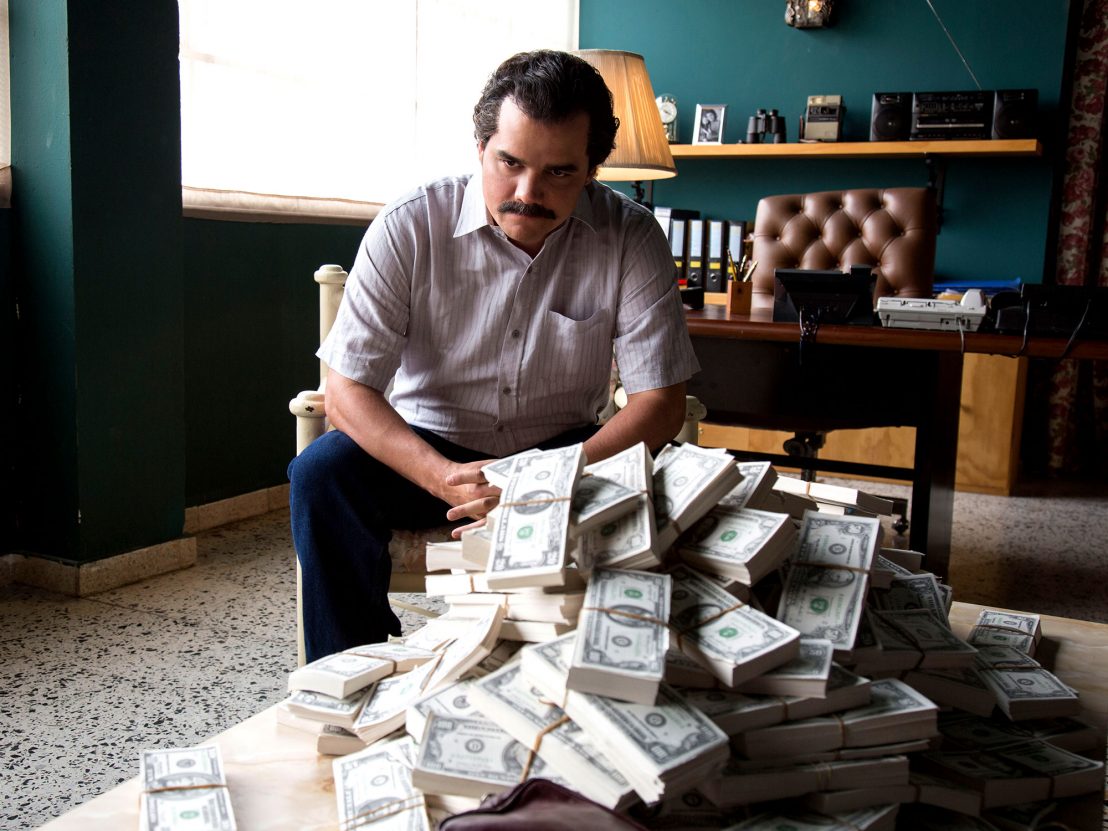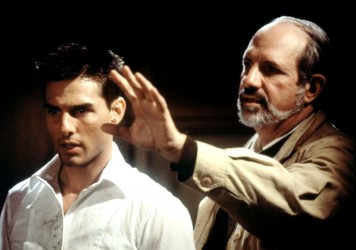
Pablo Escobar and the Medellín Cartel are having a bit of a moment. From Netflix’s Narcos to Tom Cruise’s crazy turn as Barry Seal in American Made, it’s clear that, despite the fact that (spoiler alert) he died almost a quarter of a century years ago, Escobar is now more popular than ever. Smuggling tons of cocaine across continents during the late 1970s and ’80s, Escobar’s notorious cartel ruthlessly murdered anyone who got in their way. Really they and everyone associated with them should be abhorred. So why are we all so obsessed with their story?
The paradox of Escobar’s character is a constant source of fascination. He is typically portrayed as both hero and villain – a self-styled Colombian Robin Hood who took from the rich and gave to the poor. The first season of Narcos revealed the philanthropic works of Escobar, showing him donating generously to the people of his home city. At the same time we see just how ruthless and brutal he could be, as his unique plato-o-plomo management style left behind a trail of corpses.
With a reputation for bumping off anyone who dared to interfere with his business, Escobar is thought to have been responsible for the deaths of around 4,000 people. Lose concentration for just a moment while watching Narcos, and you’ll likely miss someone being despatched. The dichotomy of the ‘good’ and ‘bad’ sides of Escobar is part of what keeps audiences coming back for more.
In Jungian theory, one of the ‘Seven Basic Plots’ is the rags to riches journey where the poor protagonist acquires power and wealth. This narrative obviously applies to Escobar, who famously had more money than he could count. Narcos loves to emphasise this, with humorous montages showing bundles of cash and nowhere left to stash it. But money – specifically an excess of it – is also a frequent theme in films relating to Escobar and the work of the cartel more widely.
In Ted Demme’s 2001 film, Blow, Johnny Depp’s happy-go-lucky cocaine trafficker George Jung is catapulted from the breadline to an obscenely flush existence (again with multiple scenes of rooms overflowing with dollar bills). The problem of where to put heaps of cash is a recurring motif of films about drug trafficking and cartels, with Doug Liman’s American Made the most recent to centre itself around a character who resorts to burying bags of dough in his backyard. Such wild rags-to-riches narrative arcs often make for exciting viewing, as few of us will ever be in the position to receive such a windfall. Not everyone is so easily morally corruptible, but there is something romantic and the idea of having so much money.

As these protagonists become rich beyond their wildest dreams, so their lifestyles become more glamorous and dangerous. In Narcos, even Escobar’s outwardly grim self-made prison, La Catedral, is internally a flashy combination of spa, nightclub and casino. He is always surrounded by beautiful women and endlessly hosts fabulous parties. Similarly Blow’s George Jung and American Made’s Barry Seal conspicuously splash out on fast cars, designer clothes and expensive jewellery.
But as the stakes get higher, so lifespans generally get shorter and endings get stickier. Particularly in case of Barry Seal who was literally counting the days before his own inevitable bumping off, after snitching on Escobar. Multiple gruesome executions in Narcos constantly reminded us what a merciless operator Escobar was. Perhaps the most chilling act of violence is the recruiting of an unsuspecting child to blow up an airplane (his target was presidential candidate César Gaviria Trujillo, whose regime was of significant irritation to Escobar).
It is incredible to think although not actually pulling the trigger, he has the blood of every single one of these victims on his hands. And with most of the Narcos characters based on real people, there is always a reference point. Notably DEA agent Javier Peña and series narrator Steve Murphy were both consultants on the show and provided facts about their experiences with Escobar and at the DEA. These first hand accounts and the real-life footage that is peppered throughout the programme ensure maximum chilling authenticity.
The image of ’80s excess presented by the likes of Narcos and American Made is at once exotic, extreme and undeniably entertaining – at a time when turning on the news makes you want to crawl into a hole and never speak to anyone ever again, these tales of daring and hedonism provide a welcome escape. Yet very rarely do these dramatised true stories deal with the wider consequences. They are swashbuckling adventures filled with guns, girls and gringos, in which the risk is always worth taking simply because the instantaneous rewards are so great.
Often it’s hard to believe some of this actually happened, but perhaps the one thing that keeps us coming back for more is the knowledge that it really did. With Narcos location scout Carlos Muñoz Portal found shot dead in Mexico just last week, it appears that cartel related troubles in Central and South America are far from being a thing of the past.
Published 20 Sep 2017

By Mark Allison
Josh Brolin and Benecio Del Toro are set to return in this continuation of Denis Villeneuve's cartel land throwdown.

Twenty years ago Brian De Palma and Tom Cruise ushered in a new blockbuster era.